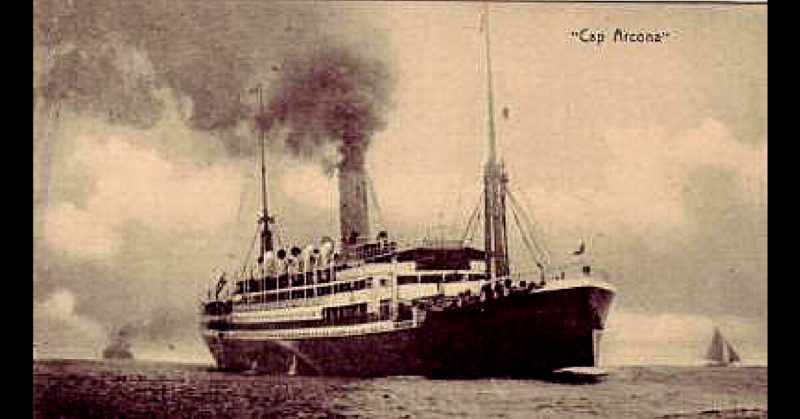The SS Cap Arcona was a German ocean liner built in the 1920’s for the Hamburg – South America Line. She was Germany’s answer to the RMS Titanic, the fastest and quickest ship of her time, and known as the “floating palace.”
The ship had her maiden voyage on October 29, 1927. She took both cargo and passengers between Germany and the east coast of South America until 1940. Then the German Navy, the Kriegsmarine, appropriated the liner as an accommodation ship.
She had three funnels, two propeller shafts, and eight steam turbines, along with 26 lifeboats and a full sized tennis court for passengers. The Arcona was equipped with top navigation and communication apparatus, as well as submarine signaling and wireless direction-finding equipment. In 1930 an echo sounding device and gyrocompass were installed, making her the perfect war machine. The Arcona undertook various jobs throughout WWII, including being used as a set for a movie.
In 1942 she was berthed in the harbor of Gotenhafen, the Polish city Gdynia, occupied by the Nazis since September 1939. She served as the set piece for the German film Titanic, authorized by Dr. Joseph Goebbels, the Nazi Propaganda Minister.
The first director, Herbert Selpin, was arrested during production for insulting the Kriegsmarine. He had complained about German military personnel molesting actresses during filming on the ship, thereby insulting the war effort. He was interred and replaced by Werner Klinger.
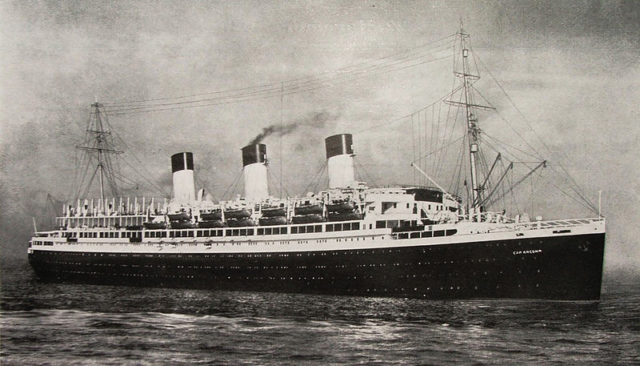
The day after his arrest he was found dead in his cell having hung himself with his trouser suspenders. A rumor circulated saying Goebbels had him murdered. It was said two guards had gone into Selpin’s jail cell on July 31, 1942, hung him and then photographed the scene. Goebbels then sent a letter to the director’s wife to inform her about her husband’s suicide.
The Arcona operated as an accommodation ship for the Kriegsmarine for several years until she was reactivated on January 31, 1945, for Operation Hannibal. During the first six months of 1945, the Germans evacuated their troops and civilians from East Prussia and moved them to western Germany, which was considered safer.
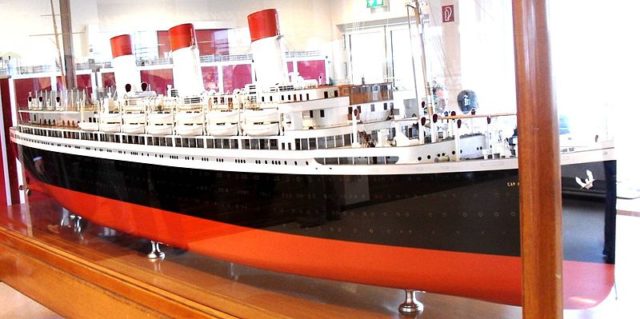
The trips involved navigating dangerous waters littered with mines and Soviet submarines. Other ships fell victim to torpedoes and missiles such as the Wilhelm Gustloff. It only took 40 minutes to sink, and almost 10,000 were thought to have died in the disaster.
Another victim was the General von Steuben as it made the voyage to Copenhagen, killing 3,500 German civilians and military.
The Captain of the SS Cap Arcona, Johannes Gertz, shot himself in February 1945 while the ship was berthed in Copenhagen as he did not want to face another journey back to Gotenhafen through the treacherous waters.
Three months into Operation Hannibal, after completing her third trip carrying 9,000 soldiers and passengers Cap Arcona’s turbines were worn out. She was decommissioned from the Kriegsmarine and moved from Copenhagen Harbour to Neustadt Bay in Northern Germany.
Meanwhile, concentration camp prisoners from all over Scandinavia were being transported to the Neuengamme concentration camp, near Hamburg. It was part of the White Bus program, working with the Swedish Red Cross. Heinrich Himmler had agreed the prisoners from Scandinavia were not considered as harmful to Germany as others and ordered they could be moved via Denmark to freedom in Sweden.
They were transferred onto a prison flotilla of boats in the Bay of Lübeck, consisting of the SS Cap Arcona, a freighter the Thielbek, the motor launch Athen, and the ocean liner Deutschland. The Prisoners were locked below deck and denied food or medical attention.
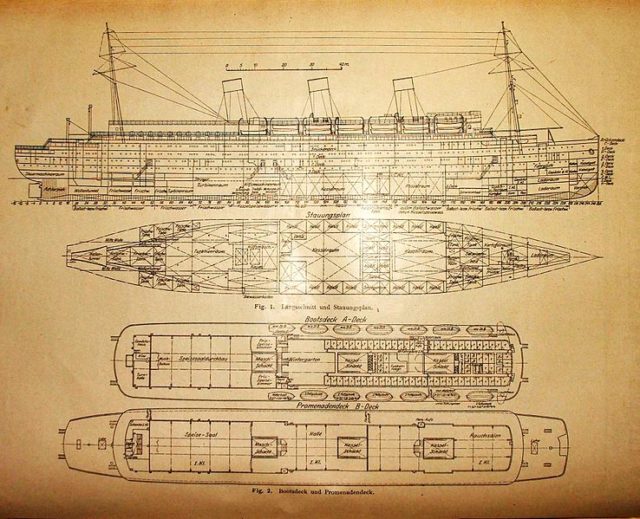
On May 2, 1945, more prisoners from Stutthof and Mittelbau-Dora concentration camps were brought on barges to the anchored ships. The Arcona refused to take any more prisoners. More than 800 were then taken to the beach and machine-gunned or beaten to death.
Later, during the war crimes trials, various claims were made regarding the destination of the prisoners on board the flotilla. Some people stated they were, in reality, going to be sent to Sweden. However, that did not appear credible as none of the ships had Red Cross markings. Georg-Henning Grav von Bassewitz-Behr, Hamburg’s last Higher SS and Police Leader, said they were to be sunk by U-Boats and killed “in compliance with Himmler’s orders.”
The Allies were aware that Heinrich Himmler had gathered with other officers and planned to escape to Norway. The prison flotilla was, therefore, bombed as part of the British RAF strikes on shipping in the Baltic Sea.
Several squadrons of Hawker Typhoon Mark 1B fighter-bombers attacked the ships. The pilots had no idea they were attacking ships containing thousands of concentration camp survivors, locked below deck.
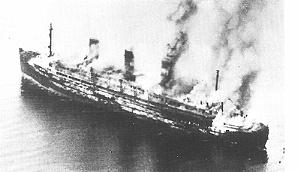
SS guards jumped overboard, equipped with lifejackets. German trawlers were able to save 16 sailors, 400 SS Men and 20 SS women. Thousands of prisoners trapped below deck drowned, with only 350 out of 5,000 people surviving.
Out of 2,800 prisoners on board the Thielbek, 50 were saved while all 2,000 prisoners from the Deutschland were transported to the Athen before the ocean liner sank.
The Cap Arcona was severely damaged, and on fire when it eventually capsized. It was considered one of the worst maritime disasters during WWII.
RAF Pilot Allan Wyse, of No. 193 Squadron, said: “We used our cannon fire at the chaps in the water… we shot them up… Horrible thing, but we were told to do it and we did it. That’s war.”
Meanwhile, on the beach, the British army had arrived in Neustadt and found the ships burning in the sea and the bodies of those who had been machine-gunned and beaten by SS officers earlier that day. They were able to rescue some of the emaciated survivors who reached the shore.
The capsized hull of the ship later drifted ashore and was finally broken up in 1949. However, bodies of the victims washed onto the beach for weeks where they were gathered and buried in mass graves nearby. Bones continued to be washed ashore for years, with the last skeleton part found in 1971.
